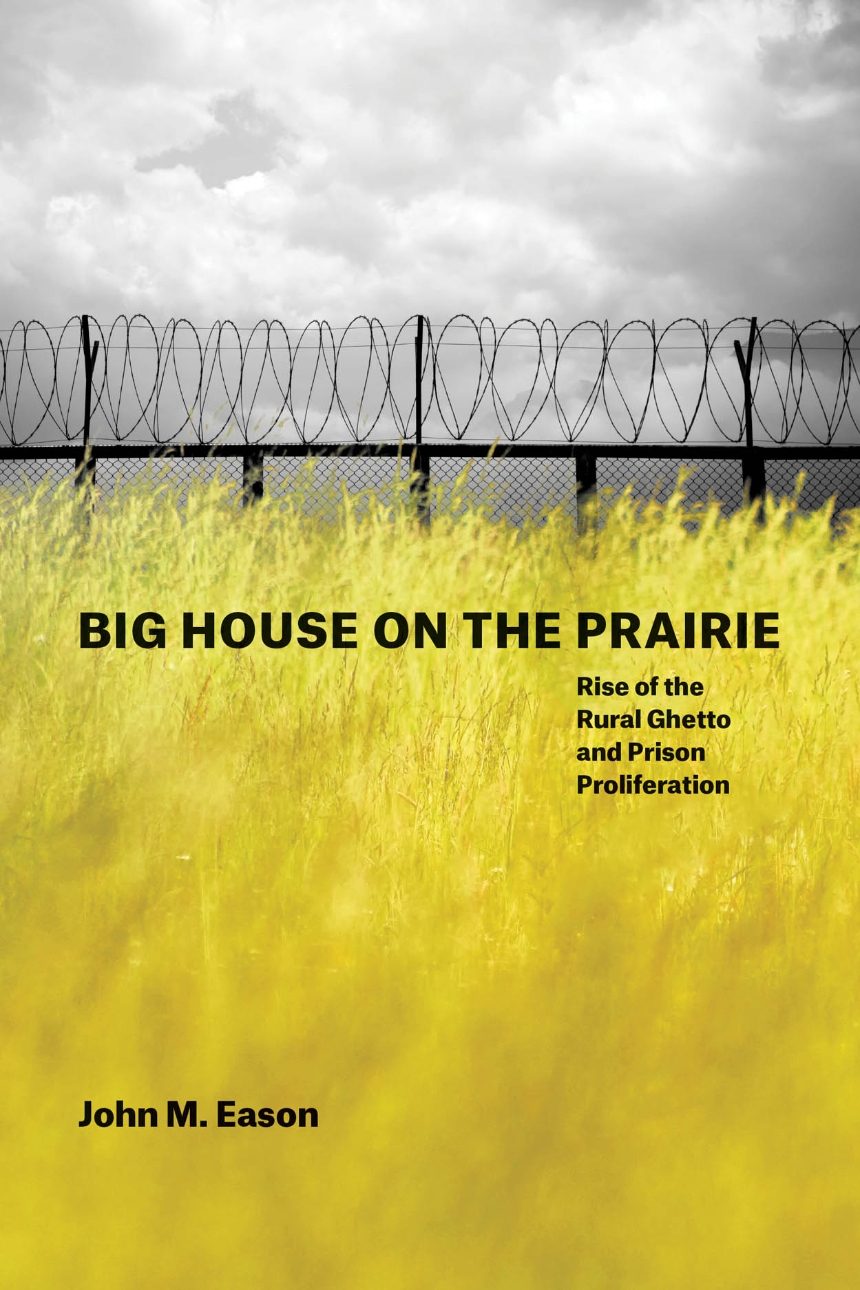Big House on the Prairie
Rise of the Rural Ghetto and Prison Proliferation
9780226410340
9780226410203
9780226410487
Big House on the Prairie
Rise of the Rural Ghetto and Prison Proliferation
For the past fifty years, America has been extraordinarily busy building prisons. Since 1970 we have tripled the total number of facilities, adding more than 1,200 new prisons to the landscape. This building boom has taken place across the country but is largely concentrated in rural southern towns.
In 2007, John M. Eason moved his family to Forrest City, Arkansas, in search of answers to key questions about this trend: Why is America building so many prisons? Why now? And why in rural areas? Eason quickly learned that rural demand for prisons is complicated. Towns like Forrest City choose to build prisons not simply in hopes of landing jobs or economic wellbeing, but also to protect and improve their reputations. For some rural leaders, fostering a prison in their town is a means of achieving order in a rapidly changing world. Taking us into the decision-making meetings and tracking the impact of prisons on economic development, poverty, and race, Eason demonstrates how groups of elite whites and black leaders share power. Situating prisons within dynamic shifts that rural economies are undergoing and showing how racially diverse communities lobby for prison construction, Big House on the Prairie is a remarkable glimpse into the ways a prison economy takes shape and operates.
In 2007, John M. Eason moved his family to Forrest City, Arkansas, in search of answers to key questions about this trend: Why is America building so many prisons? Why now? And why in rural areas? Eason quickly learned that rural demand for prisons is complicated. Towns like Forrest City choose to build prisons not simply in hopes of landing jobs or economic wellbeing, but also to protect and improve their reputations. For some rural leaders, fostering a prison in their town is a means of achieving order in a rapidly changing world. Taking us into the decision-making meetings and tracking the impact of prisons on economic development, poverty, and race, Eason demonstrates how groups of elite whites and black leaders share power. Situating prisons within dynamic shifts that rural economies are undergoing and showing how racially diverse communities lobby for prison construction, Big House on the Prairie is a remarkable glimpse into the ways a prison economy takes shape and operates.
240 pages | 1 halftone, 4 maps, 3 line drawings, 5 tables | 6 x 9 | © 2017
Sociology: Criminology, Delinquency, Social Control, Race, Ethnic, and Minority Relations, Urban and Rural Sociology
Reviews
Table of Contents
Preface
Glossary
One / Introduction: The Causes and Consequences of the Prison Boom
PART I: PRISON PLACEMENT
Two / Have you Seen My Backyard? Rural Ecology, Disrepute, and Prison Placement
Three / “It’s Like the City, Only Quieter”: Making the Rural Ghetto
Four / Finding Beauty in the Hideous: Prison Placement as Reputation Management
Five / How Not in My Backyard Became Please in My Backyard: Toward a Model of Prison Placement
PART II: PRISON IMPACT
Six / The Prison in My Backyard: Reconsidering Impact
Seven / The Tarnished Jewel of the Delta: Continuity and Change in Caste, Class, and Disrepute
Eight / Bringing Down the Big House: The Political Economy of Prison Proliferation
Acknowledgments
Methodological Appendix A
Methodological Appendix B
Works Cited
Index
Glossary
One / Introduction: The Causes and Consequences of the Prison Boom
PART I: PRISON PLACEMENT
Two / Have you Seen My Backyard? Rural Ecology, Disrepute, and Prison Placement
Three / “It’s Like the City, Only Quieter”: Making the Rural Ghetto
Four / Finding Beauty in the Hideous: Prison Placement as Reputation Management
Five / How Not in My Backyard Became Please in My Backyard: Toward a Model of Prison Placement
PART II: PRISON IMPACT
Six / The Prison in My Backyard: Reconsidering Impact
Seven / The Tarnished Jewel of the Delta: Continuity and Change in Caste, Class, and Disrepute
Eight / Bringing Down the Big House: The Political Economy of Prison Proliferation
Acknowledgments
Methodological Appendix A
Methodological Appendix B
Works Cited
Index
